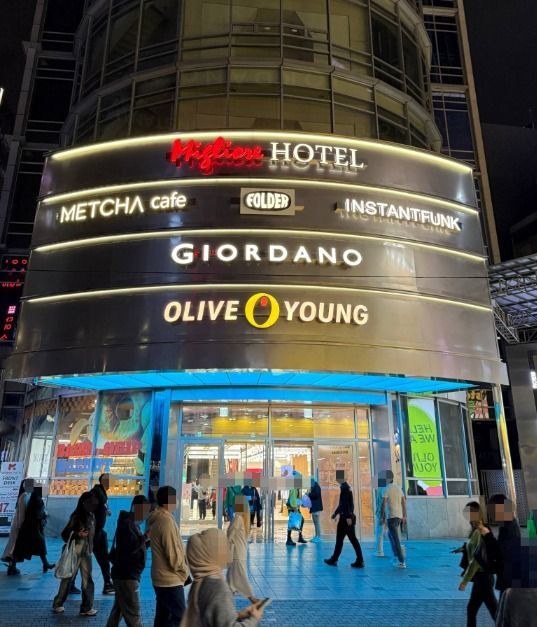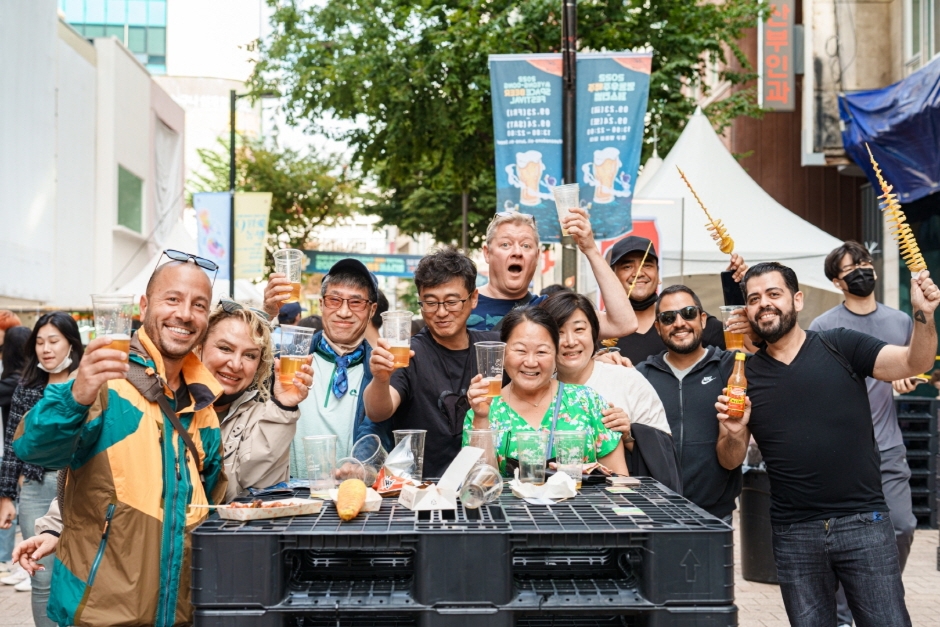Panerai - Lotte Avenuel Branch [Tax Refund Shop] (파네라이 롯데 에비뉴엘점)
1.3Km 2024-04-18
2F, 73, Namdaemun-ro, Jung-gu, Seoul
-
Chaumet - Lotte Avenuel Branch [Tax Refund Shop] (쇼메 롯데에비뉴엘점)
1.3Km 2024-04-23
3F, 73, Namdaemun-ro, Jung-gu, Seoul
-
MyungBo Inc - Lotte Avenuel Branch [Tax Refund Shop] (명보아이앤씨 에비뉴엘)
1.3Km 2024-06-27
73, Namdaemun-ro, Jung-gu, Seoul
-
Migliore - Myeongdong Branch (밀리오레 (명동점))
1.3Km 2025-02-06
115 Toegye-ro, Jung-gu, Seoul
Migliore Shopping Mall, located in Myeong-dong, reopened in August 2024 after undergoing remodeling. It provides customers with easy access to its stores, as it is directly connected to the Myeongdong Subway Station (Seoul Subway Line 4). Myeong-dong is regarded as the shopping district for youth in their 20s. Throughout the area, signs are written in English, Chinese, and Japanese for foreign visitors. The first and the second floors function as a shopping mall, and from the 3rd to the 17th floor as a hotel, providing visitors with an opportunity to shop and stay under the same roof. The first floor of the mall features beauty and lifestyle stores and the second floor has clothing stores. This is a one-stop shopping destination for fashion items that will dress you from head to toe. Additionally, visitors can also shop for albums, magazines, and other goods featuring their favorite idols.
Charles & Keith - NOON SQUARE Branch [Tax Refund Shop] (찰스앤키스 눈스퀘어)
1.3Km 2024-04-18
2F, 14, Myeongdong-gil, Jung-gu, Seoul
-
Myeongdong Beer Festival (명동맥주페스티벌)
1.3Km 2025-05-20
14, Myeongdong-gil, Jung-gu, Seoul
+82-70-8670-2182
Myeongdong Beer Festival provide a chance to find one's preference through beer. Enjoy the cool fall weather with fun people all around.
Åland - NOON SQUARE Branch [Tax Refund Shop] (에어랜드눈스퀘어점)
1.3Km 2024-06-27
14, Myeongdong-gil, Jung-gu, Seoul
-
Olive Young - Myeongdongdaero Branch [Tax Refund Shop] (올리브영 명동대로)
1.3Km 2024-04-18
1F, 120, Toegye-ro, Jung-gu, Seoul
-
Olive Young - Jeongdong Branch [Tax Refund Shop] (올리브영 정동)
1.3Km 2024-04-22
26, Saemunan-ro, Jung-gu, Seoul
-
Olive Young - Sookmyung Women’s Univ. Branch [Tax Refund Shop] (올리브영 숙대)
1.3Km 2024-04-18
19, Cheongpa-ro 45-gil, Yongsan-gu, Seoul
-
![Panerai - Lotte Avenuel Branch [Tax Refund Shop] (파네라이 롯데 에비뉴엘점)](http://tong.visitkorea.or.kr/cms/resource/42/2890442_image2_1.jpg)
![Chaumet - Lotte Avenuel Branch [Tax Refund Shop] (쇼메 롯데에비뉴엘점)](http://tong.visitkorea.or.kr/cms/resource/65/2890465_image2_1.jpg)
![MyungBo Inc - Lotte Avenuel Branch [Tax Refund Shop] (명보아이앤씨 에비뉴엘)](http://tong.visitkorea.or.kr/cms/resource/62/3314562_image2_1.jpg)

![Charles & Keith - NOON SQUARE Branch [Tax Refund Shop] (찰스앤키스 눈스퀘어)](http://tong.visitkorea.or.kr/cms/resource/15/2888615_image2_1.jpg)

![Åland - NOON SQUARE Branch [Tax Refund Shop] (에어랜드눈스퀘어점)](http://tong.visitkorea.or.kr/cms/resource/60/2887760_image2_1.jpg)
![Olive Young - Myeongdongdaero Branch [Tax Refund Shop] (올리브영 명동대로)](http://tong.visitkorea.or.kr/cms/resource/61/2878761_image2_1.jpg)
![Olive Young - Jeongdong Branch [Tax Refund Shop] (올리브영 정동)](http://tong.visitkorea.or.kr/cms/resource/11/2888011_image2_1.jpg)
![Olive Young - Sookmyung Women’s Univ. Branch [Tax Refund Shop] (올리브영 숙대)](http://tong.visitkorea.or.kr/cms/resource/25/2889625_image2_1.jpg)
 English
English
 한국어
한국어 日本語
日本語 中文(简体)
中文(简体) Deutsch
Deutsch Français
Français Español
Español Русский
Русский